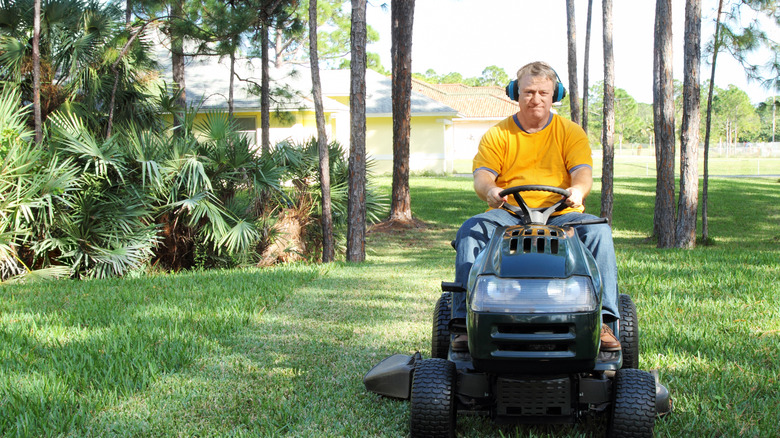What is it about Florida’s landscape that seems so perfectly manicured and planned out? If you have ever taken notice of the grass at golf courses or resorts in the Sunshine State, you might agree that it’s pristine. Likely, what you’re seeing is floratam grass, which is one of the most popular grass varieties in Florida for home and commercial spaces. The tropical grass is drought-tolerant and does particularly well in coastal communities that are hot and sunny because of its ability to handle salt — it is considered a cultivar of St. Augustine grass and has a coarse texture giving the turf a full look. If you’re lucky enough to live where the conditions are right for it, there are steps you need to take to keep your floratam looking healthy and stunning. For one, your mowing habits play a crucial role.
Floratam grass must be mowed at the right height to remain in the best condition possible. The broad flat blades grow vertically and rapidly, so it is recommended to mow your grass about once a week. But, before you schedule a day to work on your yard, you’ll want to consider the right length to mow your lawn as well as how sharp the blade is on your lawn mower. Let’s start with how much grass you’re trimming off the top.
Choose the correct mowing height

You want to aim to keep floratam grass at about 3 to 4 inches in height, which will help maintain its healthy root systems. The grass blades are blunt and thick, so keeping it at this length will allow you to show off the fullness this grass variety has to offer. It may seem tedious to keep your prized turf at a certain height, but it’s highly important.
Floratam is already prone to thatch, which is a layer of dead grass and plant debris between the soil and grass — this layer can make it really difficult for your lawn to breathe and absorb nutrients. If you let your lawn grow too long, moisture gets trapped under the tall blades, encouraging thatch to develop, and your lawn will become more susceptible to pest infestations and diseases. You also run the risk of the grass suffocating itself because the blades shade the roots and make it difficult for sunlight to reach them. This will cause unsightly brown patches on your turf.
Keep the blade on your mower sharp
Beyond mowing height, how sharp the blade is on your lawn mower matters. By cutting your grass with a dull blade, you run the risk of ripping the grass instead of cutting it, which makes it more prone to pests and diseases. For best results, it is recommended to sharpen your lawn mower blades about two to three times a season. You can do this with a bench grinder, a blade sharpening drill, or a flat file.
If some of your turf has already suffered from poor mowing habits, you will likely need to either patch up your lawn with new grass plugs or lay down new sod since the turf is not established by seed on home lawns. The good news in this case is grass plugs are relatively easy to plant and adapt to your yard quickly. Just be sure not to mow the grass plugs until they reach about 6 inches in height. This ensures they become established in the ground and leads to a healthy, full lawn.